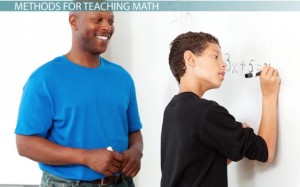How to fix decline in Math Scores

Recent data released in New Zealand paints an alarming picture of decline in Mathematics scores for Primary School leavers. These students then enter High School without the math skills to succeed. Here are some of the results:
“Maths scores have been declining since 2002, according to OECD data. National Standards figures show a slight climb in the past three years, but say one in four are behind in the subject by the time they leave primary school at Year 8. A national monitoring study from 2013 had even lower results, with just 41 per cent of students at the expected level when they leave primary, despite the majority achieving well just four years earlier. The drop-off after Year 4 – when students are aged 9 to 10 – is a trend across all subjects, but in mathematics it is particularly significant…
 Professor John O’Neill, the director of Massey University’s Institute of Education, called the problem a “chicken and egg” scenario. He said because many students dropped maths – and science – part way through high school, teaching students often lacked subject knowledge in those areas.
Professor John O’Neill, the director of Massey University’s Institute of Education, called the problem a “chicken and egg” scenario. He said because many students dropped maths – and science – part way through high school, teaching students often lacked subject knowledge in those areas.
“In the past, you could fill students’ gaps in learning at teachers’ college. But whereas 10 years ago students would get several hundred hours in a learning area, now they might only get 50. It’s not enough,” he said. Teachers then lacked confidence, their students got a raw deal, ended up not liking maths, and the cycle began again.
Some educators believed the answer was shifting teaching to masters level to raise entry levels, but even then graduates could come through with limited maths and science ability, Mr O’Neill said.
“Part of the problem is with NCEA, in that it allows too much choice. It’s a very good system but it allows students to drop out of science and maths too early.”
He said the Government needed to be “courageous enough” to recognise it would take the country 20 years, a sophisticated policy response and a long-term funding injection to break the cycle.
The Ministry of Education has already added a suite of maths acceleration programmes and professional development to support underachievement in maths, at the cost of $20 million per year.One is a 15-week intervention for struggling students, the other a programme that supports teachers to undergo extra training to become Mathematics Support Teachers over two years, during which time they work with small groups of high-needs pupils. They eventually help other teachers in their classrooms too.” Read the full article here
Editor’s note: My personal view is that, like any student interest, Mathematics needs to be fostered through a variety of different strategies including coaching, challenge and celebration. Parents also play a crucial part in devoting “Math Time” and sharing the excitement of working with numbers, patterns, shapes and puzzles. Whilst it is easy to blame teachers for the decline in mathematical ability, there is some very capable and courageous teaching going on – teaching in Mathematics that inspires and delights numerical discovery among younger students. Some ideas can be found here:

